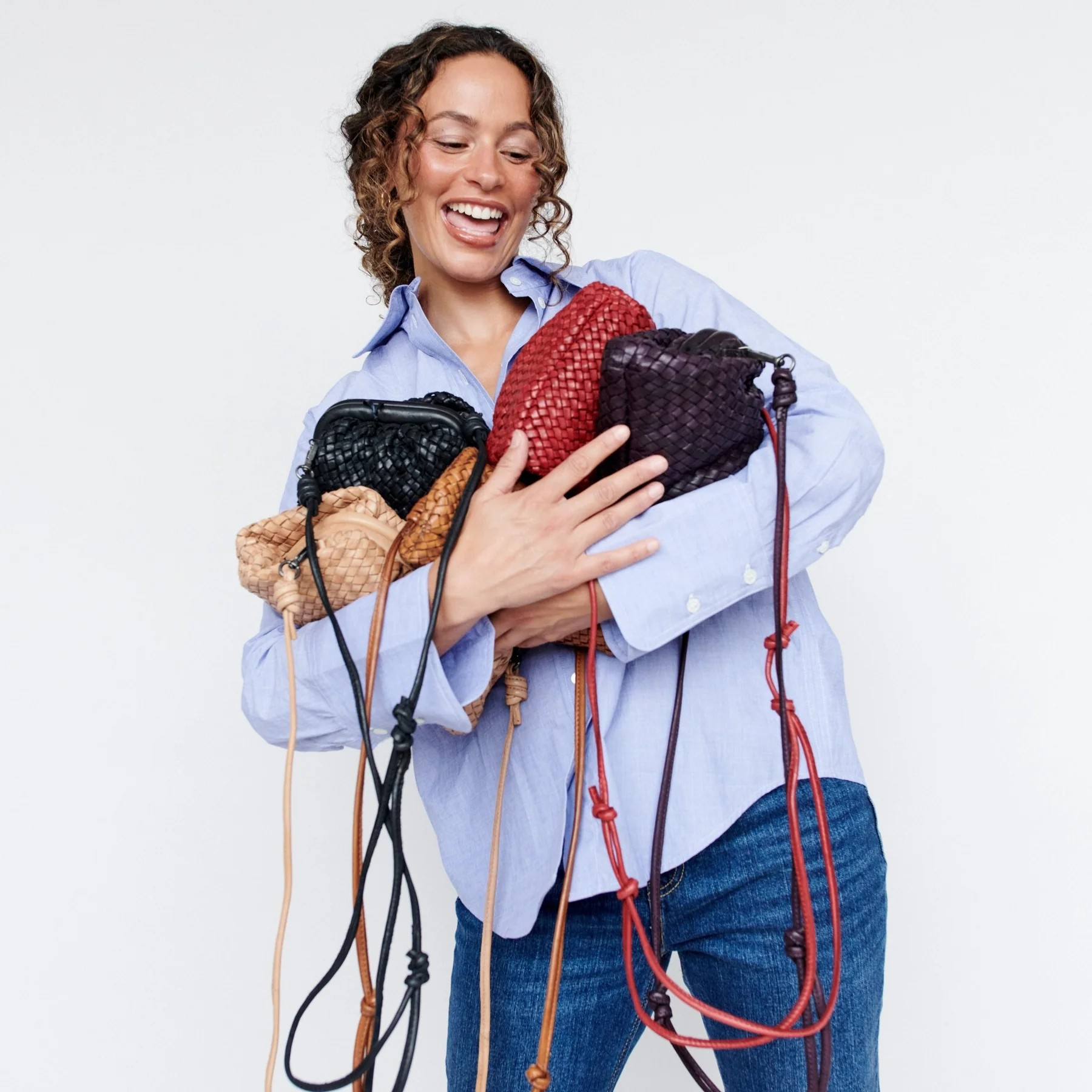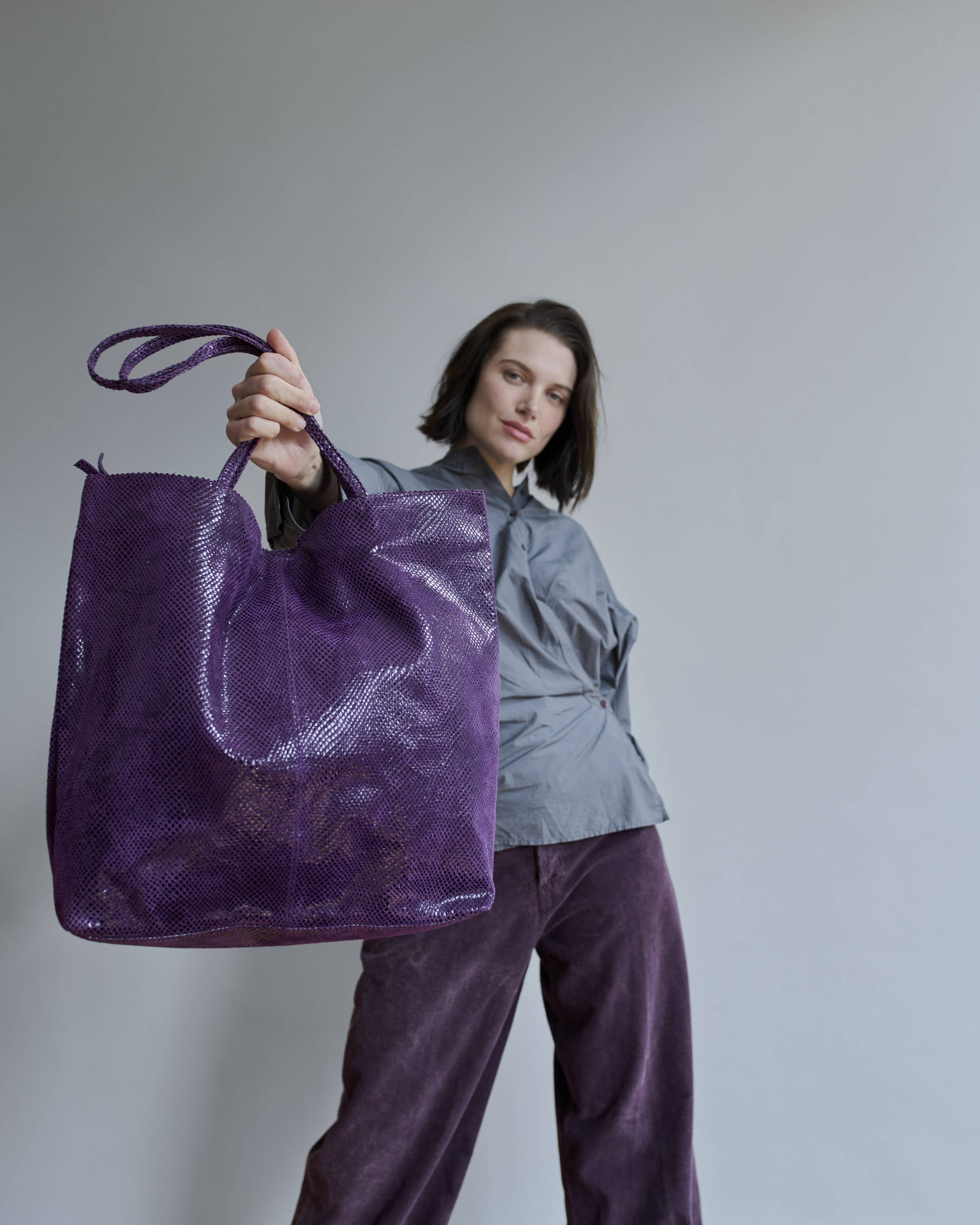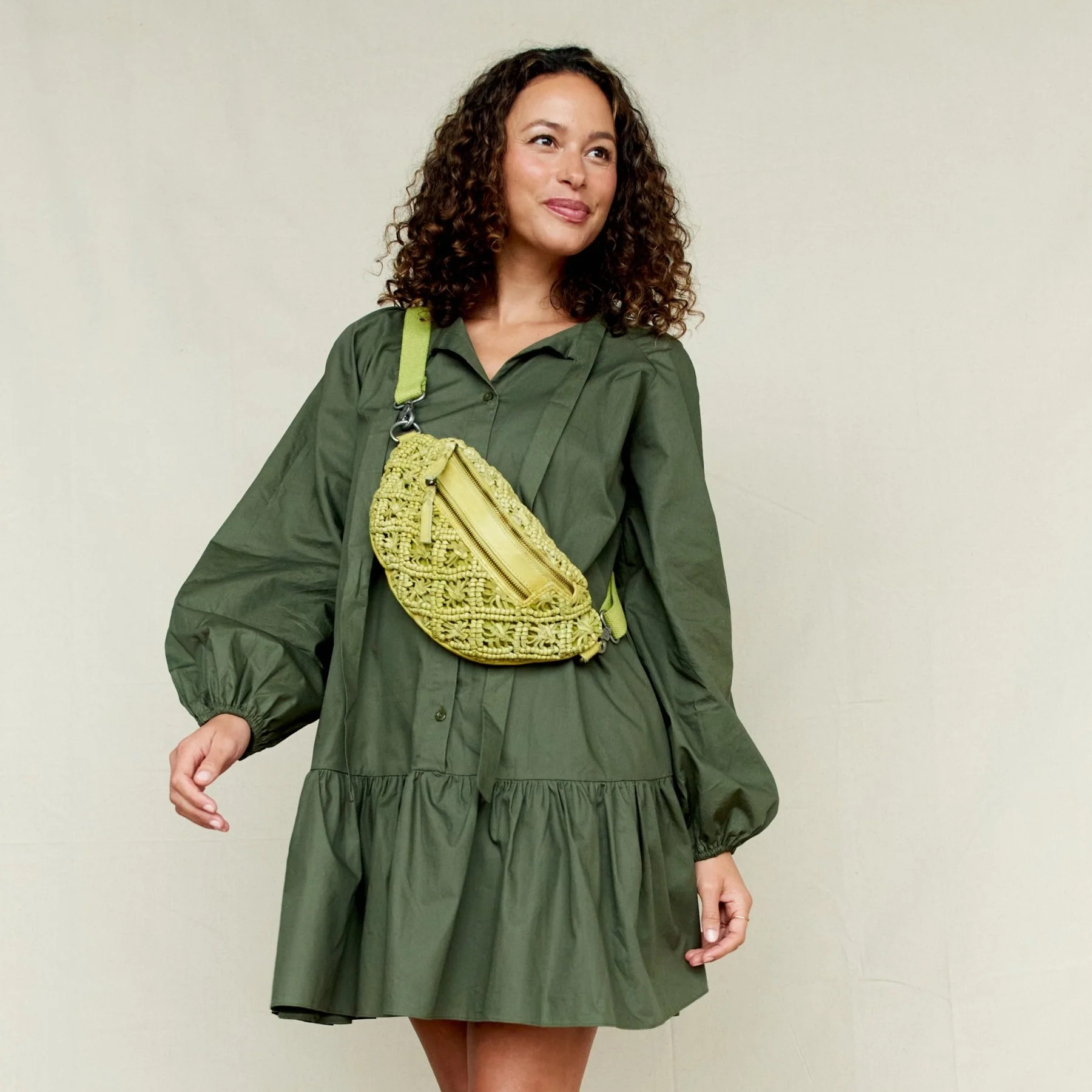
What Is Leather Splitting? Split Leather vs. Full-Grain Leather
In the intricate world of leather, different types have unique characteristics and uses — from the durability of full-grain leather to the affordability of split leather. But how are these different types of leather created? The answer is leather splitting.
Leather splitting is a precise process that divides a thick hide into multiple layers. This way, a hide's topmost layer can be reserved for a full-grain leather handbag, while its other layers might become split-grain leather jackets or shoes. This practice allows manufacturers to maximize the use of animal hide and create various leather types with different textures and qualities.
Let's delve into the world of leather splitting and explore how it leads to some of the world's favorite leather goods.

What Is Leather Splitting?
Leather splitting involves dividing an animal hide into thinner layers, typically through specialized machines. The top layer, known as the grain split, retains the hide's dense and durable surface. The remaining layers, known as split leather, lack the grain's tightly woven fibers, making them less resilient and more prone to tearing.
Before splitting, the hide undergoes tanning, which affects its thickness and flexibility. For example, vegetable-tanned leather, often thicker and stiffer, requires precise splitting to achieve the desired thickness. This step is crucial since the thickness of the leather determines its suitability for different types of products.
Types of Splits
- Grain split: The uppermost layer of the hide, known for its strength and tear resistance. It is common in premium products like smooth leather goods.
- Drop split: The layer beneath the grain split is called split leather. Manufacturers often coat and emboss it to mimic grain leather, but it's less durable.
- Middle split: Occasionally found in thicker hides, this layer offers additional material for products that don't require the durability of grain leather.
Coating & Embossing Split Leather
To enhance the appearance of split leather, manufacturers often coat it with pigments or polyurethane (PU) and emboss the PU leather to resemble grain leather. While this process improves its look, the leather is more susceptible to peeling and cracking. This is particularly relevant in lower-end products, where manufacturers prioritize appearance over durability.
Uses for Split Leather
Split leather is versatile, and many sectors use it:
- Fashion & accessories: Split leather is famous for handbags, shoes, and belts. Its lighter, thinner characteristics make it a popular choice for budget-friendly products.
- Furniture & upholstery: Split leather is standard in furniture due to its affordability and appealing texture. It often has a coating to improve its durability, which can lead to issues like cracking over time.
- Automotive industry: Split leather is standard in vehicle interiors, such as seats and steering wheel covers. While it offers a premium look, it may not withstand wear and tear, as well as grain leather.
- Industrial uses: Split leather is also popular in safety gear, such as gloves and aprons, due to its resistance to heat and abrasion.
Split Leather Characteristics
Durability & Maintenance
Split leather, while not as durable as full-grain leather, offers decent resistance to wear and tear. However, it requires regular maintenance, especially in forms like suede or nubuck. Cleaning with specialized brushes and conditioning with appropriate products can help extend its lifespan.
Cost-Effectiveness
One of the main advantages of split leather is its affordability. It provides a cost-effective alternative to higher-end leathers, making it accessible for many products. This makes it a popular choice for manufacturers aiming to lower costs. However, consumers should know that the quality will be much lower than that of full-grain or top-grain leather.
Environmental Impact
The traditional methods of tanning split leather, particularly chrome tanning, have significant environmental repercussions. Although more sustainable leather dyeing methods like vegetable tanning exist, they are less common due to higher costs and longer processing times. Consumers increasingly demand eco-friendly alternatives, and innovations like bio-based leather substitutes are emerging to meet this need.

Full-Grain Leather vs. Split Leather
Full-grain leather is the top layer of the hide. It retains its natural texture and markings, making it the highest quality leather. It is highly durable and develops a patina over time, enhancing its appearance. Full-grain leather is ideal for high-end products that must be beautiful and long-lasting.
Split leather, on the other hand, comes from the layers beneath the grain. It is less durable and needs to develop a patina. While manufacturers can treat it to improve its appearance, it is more prone to damage and does not age as well as full-grain leather.
Common Misunderstandings
Many consumers mistakenly believe all "genuine leather" products are high quality. In reality, though technically genuine, split leather is of a lower quality than full-grain leather. Manufacturers often exploit this misconception, making it essential for consumers to understand the differences between various types of leather.
Legal & Ethical Labeling
There are varied regulations across countries regarding the labeling of split leather. Some regions require clear labeling to differentiate split leather from higher-quality grain leather. However, mislabeling is common, leading to consumer deception. It's essential to be aware of these practices to make informed purchasing decisions.
Frequently Asked Questions
What is the process of leather splitting?
Leather splitting involves horizontally cutting a hide into thinner layers. The process ensures uniformity in the leather's thickness, which could vary before tanning. A hide can be split up to nine times. Thanks to its aesthetic appeal and durability, split leather is versatile and has varied applications. You can find split leather in the fashion, furniture, automotive, and industrial sectors.
What are the different types of splits in leather?
Leather is split into various types, such as grain split, drop split, and middle split. Each has unique qualities and applications.
What are the advantages and disadvantages of split leather?
Split leather is highly durable in the short term, requires little maintenance, and is cost-effective, although not long-lasting. However, it has a significant environmental impact, which should be considered.
How can you maintain split leather items for longevity?
You can maintain split leather items through regular cleaning, proper storage, and conditioning. These methods will help preserve your items' quality and extend their life.

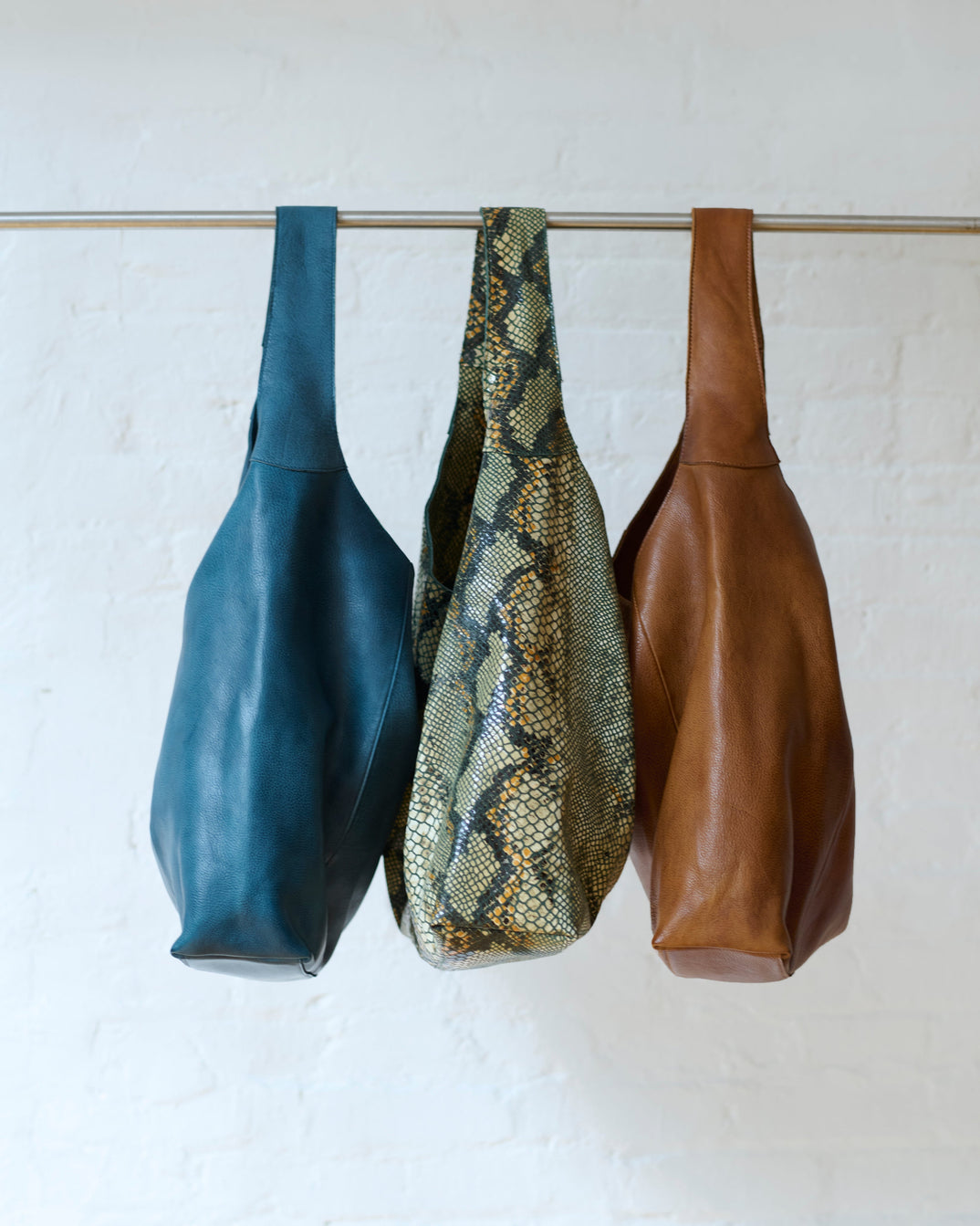
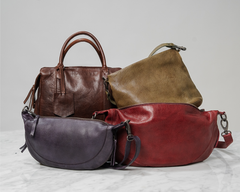
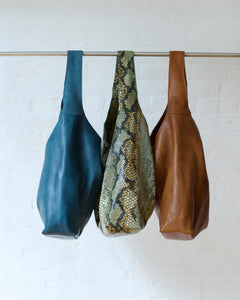
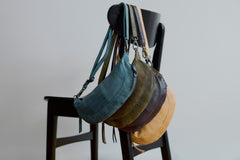
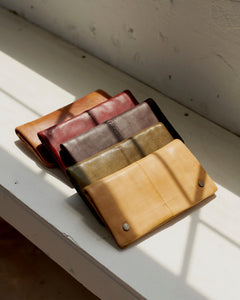

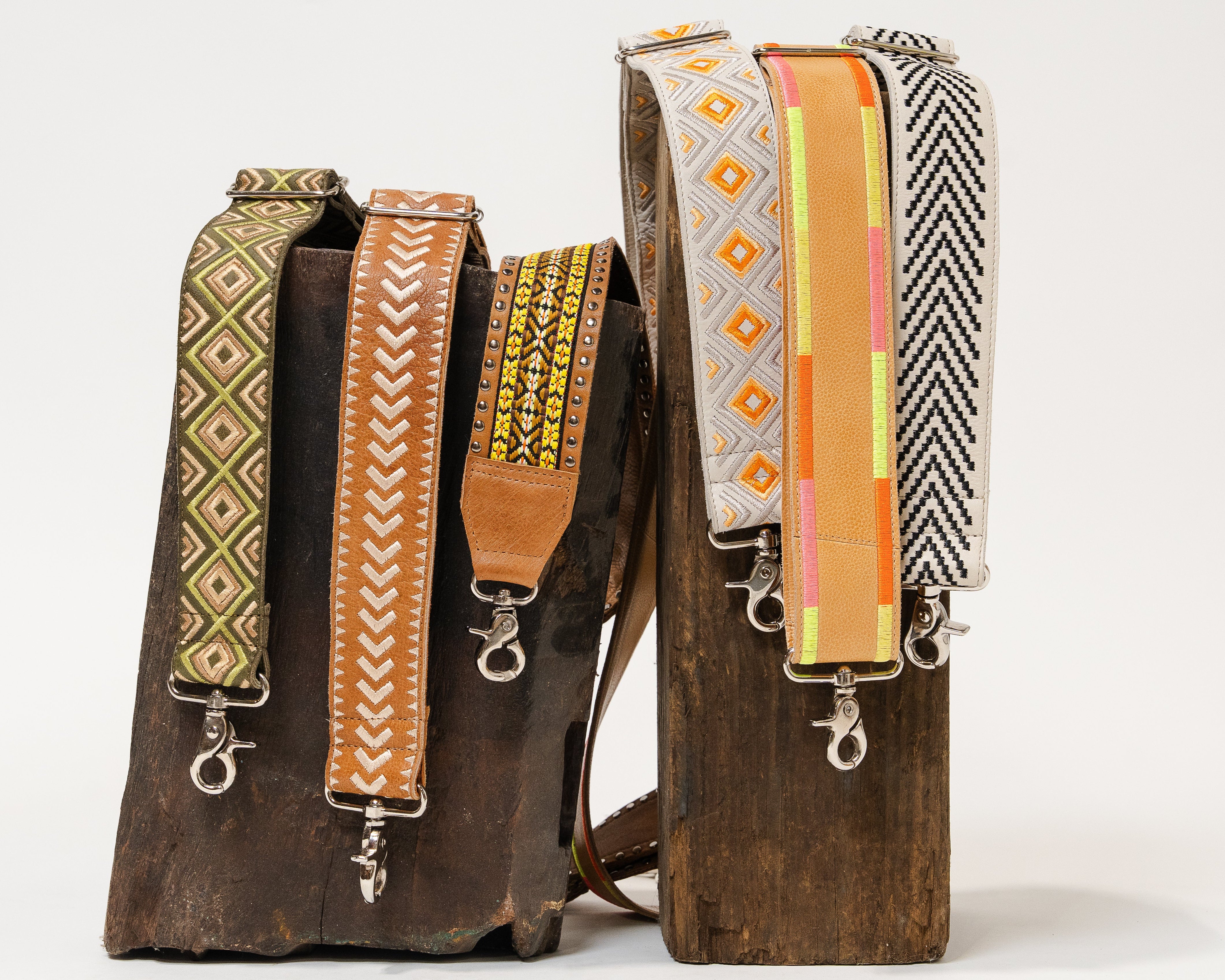
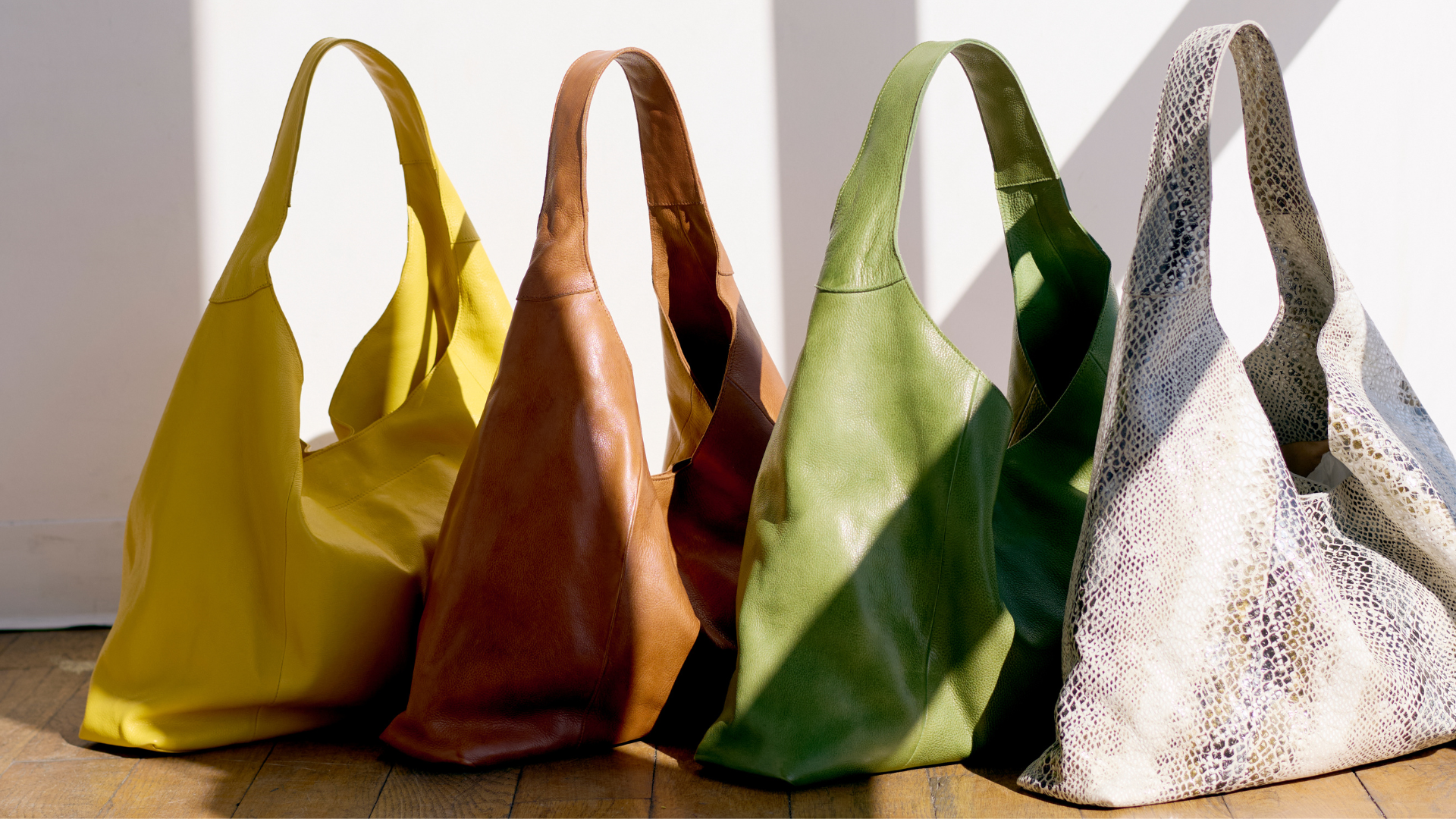
 Black
Black Bubble Black
Bubble Black Charcoal
Charcoal Cognac
Cognac Brown
Brown Cafe
Cafe Walnut
Walnut Almond
Almond Saddle
Saddle Eggplant
Eggplant Oxblood
Oxblood Burgundy
Burgundy Aubergine
Aubergine Tan
Tan Hazel
Hazel Ballet Slipper
Ballet Slipper Blush
Blush Camel
Camel Red
Red Orange
Orange Natural
Natural Burnt Orange
Burnt Orange Poppy
Poppy Plum
Plum Rosa
Rosa White
White Oat
Oat Grey
Grey Cobra
Cobra Desert Trail
Desert Trail Denim
Denim Indigo
Indigo Emerald
Emerald Teal
Teal Turquoise
Turquoise Sky Blue
Sky Blue Grass
Grass Green
Green Moss
Moss Olive
Olive Yellow
Yellow Lemon
Lemon Honey
Honey Chartreuse
Chartreuse Mustard
Mustard